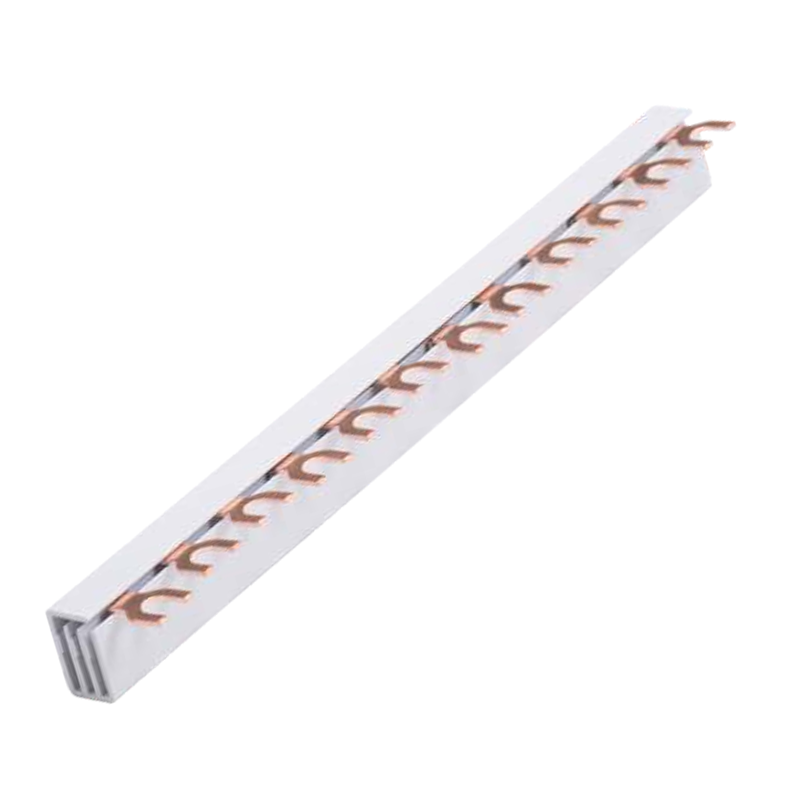Advanced Busbar Systems: Enhancing Power Distribution for Future-Ready Infrastructure
As the demand for safer, more efficient, and scalable electrical power distribution systems increases, advanced busbar systems are rapidly becoming a cornerstone of modern infrastructure. Whether in industrial plants, commercial facilities, renewable energy installations, or smart buildings, busbars provide unmatched reliability, compactness, and flexibility. In this comprehensive guide, we explore everything you need to know about modern busbar systems, their advantages, innovations, applications, and future outlook.
1. What Is a Busbar System?
A busbar system is a modular electrical distribution system that consists of flat or hollow conductors (typically made of copper or aluminum) used to carry large amounts of electrical current within a switchboard, distribution board, substation, or other electrical apparatus. Unlike traditional wiring methods that involve numerous cables, busbars streamline power distribution, reduce space requirements, and improve installation safety and efficiency.
2. Evolution of Busbar Technology
Traditionally, power distribution relied heavily on cable-based systems, which had limitations in heat dissipation, space optimization, and maintenance. Over time, the industry shifted toward using copper busbars for their superior conductivity and thermal performance. Today, with the integration of digital technologies and smart grid requirements, busbar systems have evolved to support intelligent monitoring, modularity, and dynamic load control.
3. Types of Busbars
- Copper Busbars: Highly conductive and durable, ideal for high-current and high-temperature applications.
- Aluminum Busbars: Lightweight and cost-effective, commonly used in large-scale installations with budget constraints.
- Laminated Busbars: Insulated and layered conductors that reduce inductance and improve EMI (electromagnetic interference) performance.
- Flexible Busbars: Made of braided or layered conductors, used in dynamic systems and tight spaces.
4. Key Benefits of Advanced Busbar Systems
- Space Saving: Compact design reduces switchgear size and installation footprint.
- Reduced Energy Loss: Lower impedance and better conductivity minimize energy loss due to resistance.
- Enhanced Safety: Fewer cable joints reduce hotspots and fire risk.
- Ease of Installation: Pre-assembled components reduce on-site labor time and errors.
- Scalability: Ideal for modular expansions in commercial and industrial setups.
5. Busbar vs Traditional Cabling: A Comparison
| Criteria | Busbar System | Traditional Cabling |
|---|---|---|
| Installation Time | Significantly faster | Labor-intensive |
| Space Requirement | Minimal | High |
| Heat Dissipation | Better | Moderate |
| Safety | Higher | Lower due to multiple joints |
| Maintenance | Low | High |
6. Design Considerations
Designing a reliable busbar system involves careful evaluation of current capacity, insulation type, ambient temperature, cooling methods, mechanical strength, and short-circuit ratings. Engineers must also consider expansion joints for thermal expansion and appropriate support systems to avoid mechanical stress during operation.
7. Busbar Installation Best Practices
- Always follow manufacturer guidelines and local codes.
- Ensure proper torque during connection to avoid overheating.
- Install in environments with controlled temperature and humidity.
- Use insulating barriers between conductors of different phases.
- Perform insulation resistance and high-voltage tests post-installation.
8. Smart Busbar Systems: The Future of Power Distribution
With the rise of Industry 4.0 and smart infrastructure, busbar systems are now integrated with sensors and monitoring devices that provide real-time data on voltage, current, power factor, and temperature. This enables predictive maintenance, energy optimization, and enhanced fault detection, all contributing to better asset management and system reliability.
9. Applications Across Industries
- Data Centers: High-power density and reliability needs are met by scalable busbar systems.
- Manufacturing: Fast assembly and flexible routing for dynamic machinery setups.
- Renewable Energy: Ideal for solar farms and wind turbine installations where compact design matters.
- Commercial Buildings: Used in electrical risers and switchboards for space efficiency.
- Transportation: In railway stations and airport power systems.
10. Challenges in Busbar System Implementation
Despite their advantages, busbars are not without challenges. High upfront costs, especially for copper systems, can deter adoption. Skilled labor is also required for correct installation and testing. In some regions, lack of awareness and outdated standards may limit market penetration.
11. Sustainability and Eco-Friendly Aspects
Busbar systems support sustainability through reduced material use, longer service life, and better recyclability. Copper busbars, for instance, are nearly 100% recyclable. Moreover, their energy efficiency contributes to lower carbon footprints over the system’s lifecycle.
12. Standards and Certifications
Compliance with international and regional standards such as IEC 61439, UL 857, and ANSI C37 ensures the safety and reliability of busbar systems. Certifications from reputable bodies like CE, RoHS, and ISO are also crucial for ensuring product credibility and market acceptance.
13. Selecting the Right Busbar Manufacturer
- Check for compliance with international standards.
- Evaluate material quality and conductor purity.
- Ensure after-sales support and availability of accessories.
- Review case studies or testimonials for real-world performance.
- Ask for technical customization options based on project needs.
14. Cost Considerations and ROI
While busbar systems may have a higher initial cost, the long-term ROI is substantial due to reduced installation labor, lower maintenance, and energy efficiency. Many businesses find that the system pays for itself within a few years, especially in high-load environments.
15. Future Outlook and Innovations
The future of busbar systems lies in digitalization, modularity, and hybrid solutions. We anticipate wider adoption of smart busbars with IoT integration, adaptive load balancing, and AI-based predictive diagnostics. Wireless busbar technologies and new conductor materials (such as graphene) may also shape the next decade.
Conclusion
Advanced busbar systems are the backbone of next-generation electrical infrastructure



